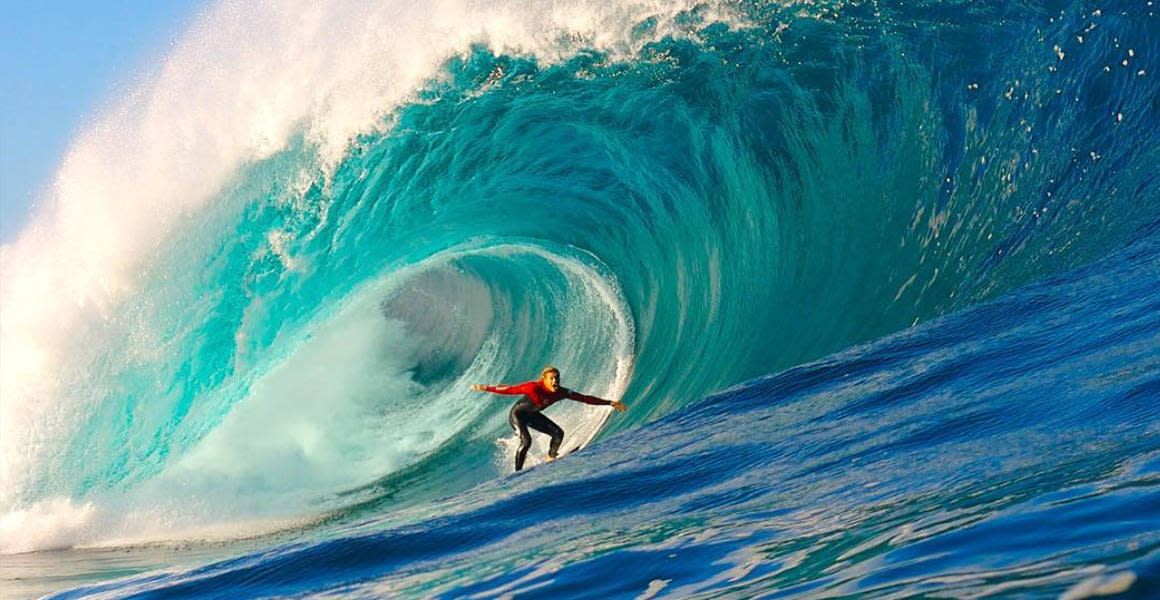
Why I Surf Massive Waves — The Thrill of Surfing with Tom Lowe
February 18, 2025Tom Lowe from Cornwall, England is not like other surfers out there, charging waves the size of mountains. We sat down with him in his winter base at Lapoint Ericeira, Portugal to hear what drives him to paddle among monsters in famous spots like Jaws in Hawaii, Puerto Escondido in Mexico and Nazaré in Portugal.
– I do this for myself and I try as much as possible not to compare myself with the other guys in the water. I’m always looking for that one wave – the one wave I’ve been working towards my whole life.
Tom is spending his winter in Ericeira where he has teamed up with his good friend Nic von Rupp in the heavy slabs and big waves in the area. Having Nazaré, the wave where Garret McNamara famously caught what’s believed to be a 100 ft wave and therefore the biggest wave ever ridden, is a huge bonus for the 32 year old Brit.
– It’s a beast, a monster. It’s always a fight when I’m out there, because my body knows that there’s huge waves out there rolling in, but I just have to go back to my breathing and stay calm. The beautiful thing about surfing is that you never know what’s in store for you and one day you might get that perfect wave of yours.
That perfect wave did not appear two weeks ago when Nazaré witnessed the first swell of the season, gathering some of the world’s best big wave surfers, and in the middle of it was Tom himself.
– I surfed it once last Christmas, but when I look at the photos and think back at how it was in the water I can definitely say that this time was a lot bigger. It wasn’t meant to happen for me this time around so along with a successful wave I had a serious wipeout.
Tom was perfectly placed as he dropped in on a bomb, but as he went down the face the wind got a grip of the board and blew it from under his feet, resulting in a Tom Lowe trademark pin drop free fall. Although not his worst wipeout, every wipeout in such conditions carry great risks.
– Sometimes they aren’t too bad and you feel you got away with it. You see people get a 30 feet wave to the head and people go “that guy must be dead”, but then he comes up 10 seconds later and paddles out to have another wave. I’ve had those. It gives you confidence, knowing that you can take it, but you never aim for it. Once in a wipeout you’re doing a lot of things on instinct, like folding your arms in not to dislocate your shoulders and blowing your ears to prevent broken eardrums. It’s incredible how long the body can stay under water, it’s just your brain telling you the opposite. You can train for this, but then again you never train for being beaten up and tumbled around by a 30 feet wave and then holding your breath for a minute. But with experience comes knowledge and confidence. The one I had that day wasn’t the worst, but enough to really drain my body for energy. It’s now been two weeks since the wipeout and Tom’s body has still not gotten over it. Two days in bed, a cold, sore throat, nose and shoulders are the result of what these massive waves can do to your body. Although well aware of the risks, Tom always wants to get out there and chase that perfect swell with the perfect waves.
– I used to be the guy that went on every wave that came my way, seriously injuring myself several times. It was after a 5 year spell in Ireland that I had a really serious injury and came to the conclusion that I should change my approach and do more prepared and calculated risks. I guess it came from the fact that I grew up being the kid that jumped from roofs or doing a bit of immature things. I also did bodyboarding, so I was used to taking a beating. When he goes out into big conditions today Tom never goes without evaluating his gear, the conditions and the crew around him. Having people on jetskis and wearing an impact vest as well as CO2 cartridges to help him float to the top after a wipeout helps him and others out in bigger and bigger waves.
– People think I’m a lunatic, but I just point to the facts. There are much higher risks in climbing or base jumping. Your body wants to run away when it sees a wave at that size, but I guess that some people, myself included, just goes “waahh”, turns around, paddles and drops in on it. Sometimes your body actually creates this war cry and we make a lot of fun of it sometimes. I heard Mark (Healey) have one in Puerto Esondido (Mexico) once, and he didn’t even know he was screaming his lungs out when he dropped in. I guess it’s our bodies’ way of handling the situation. avericks or even the Eddie (big wave competition in Hawaii). Shane (Dorian), Greg (Long), Mark (Healey), along with plenty other legends; these are the guys that have been driving this sport for decades. If I would compete in the Mavericks I would just go at it as a free surf and enjoy it. If the right waves come my way – great. If not, then I’m just glad to be a part of it. Surfing big Nazaré and maybe the Titans of Mavericks aside, there’s one wave that remains special to Tom and that he considers as the place where he’ll catch the wave of his life.
– Mullaghmore. I prefer paddling to towing, because I feel that it’s so pure and I’m in control of everything and to a paddling big wave surfer there’s nothing that beats a big barrel. My roots are in Ireland and that wave can deliver some seriously big barrels on the right day, so I’m going to be staring at the charts all winter to see if the right waves and winds line up, and if they do I’m going to be out there on hopefully the right board with the right mindset trying to catch the best wave of my life.

Maren Gimnes
Maren is a copywriter and content creator with a true passion for exploring the beautiful planet we call home. Her love for the ocean and salty days brought her to Lapoint, where she’s been living the digital nomad life and visiting our surf camps in all corners of the world. Maren aims to inspire others to pursue the surf lifestyle, to never miss a sunset and to follow their dreams.

